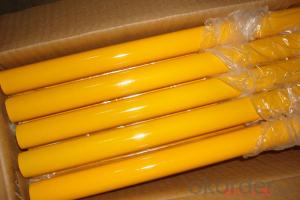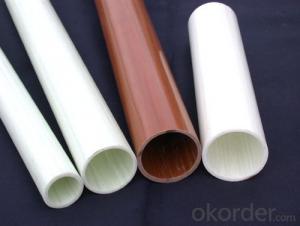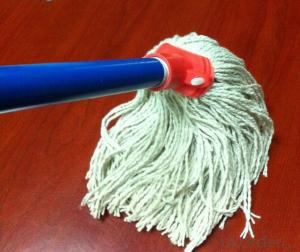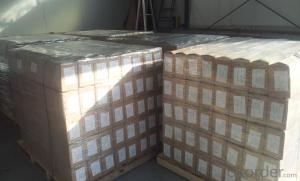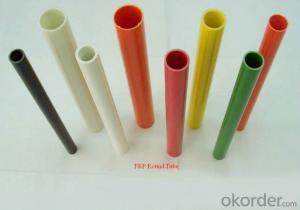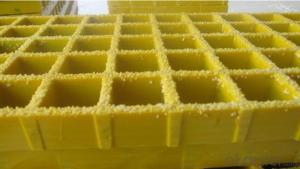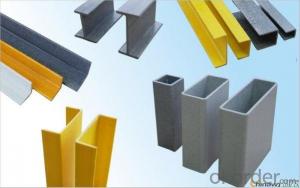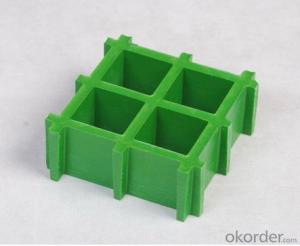High Quality FRP Pultrusion Profiles Fiberglass Broom Handle
- Loading Port:
- China Main Port
- Payment Terms:
- TT OR LC
- Min Order Qty:
- -
- Supply Capability:
- -
OKorder Service Pledge
OKorder Financial Service
You Might Also Like
Specifications of Fiberglass Broom Handle with High Quality:
Material:fiberglass
Length:customized
Color:customized
Craft:Pultrusion
Brief Introduction to the fiberglass broom handle with High Quality:
Material: | Fiberglass |
Length: | Customize |
Color: | Customize |
Diameter | Customize |
Type: | Solid, round |
Features &Advantages: | 1)high strength and hardness |
2)resin is unsaturated polyester resin or epoxy resin | |
3)resistant to corrosion and insulation | |
4)exceptionally straight |
The Applications of Fiberglass Tube for Mop Pole:
Our products are suitable for tent , kites, toys, model, planes, tool handle, golfbags, golftraining nets,other sports apparatuses play a supporting role. We can produce many kinds of colorful Fiberglass Tubes according to our customers' requirements.
- Q: Can FRP pultrusion profiles be used in the construction of water treatment plants?
- Yes, FRP (Fiber Reinforced Polymer) pultrusion profiles can be used in the construction of water treatment plants. FRP pultrusion profiles offer several advantages such as high strength-to-weight ratio, corrosion resistance, and durability, making them well-suited for water treatment plant applications. These profiles can be used in various structural components like beams, columns, grating, and handrails, providing a cost-effective and long-lasting solution for the construction of water treatment plants.
- Q: Are FRP pultrusion profiles resistant to impact from flying debris?
- Yes, FRP pultrusion profiles are highly resistant to impact from flying debris. Thanks to their reinforced fiberglass construction, these profiles have exceptional strength and durability, making them capable of withstanding significant impact forces without incurring damage.
- Q: Can FRP pultrusion profiles be used in telecommunications towers?
- Yes, FRP (Fiber Reinforced Polymer) pultrusion profiles can be used in telecommunications towers. FRP pultrusion profiles offer several advantages that make them suitable for this application. Firstly, FRP profiles are lightweight yet strong, allowing for easy installation and reduced structural weight in telecommunications towers. This is important as it helps to minimize the overall weight load on the tower structure. Secondly, FRP pultrusion profiles have excellent corrosion resistance properties, making them ideal for outdoor applications like telecommunications towers, which are exposed to various environmental conditions. Unlike traditional materials such as steel or wood, FRP profiles do not rust, rot, or degrade when exposed to moisture, UV radiation, or chemicals typically found in outdoor environments. Additionally, FRP pultrusion profiles offer excellent electrical insulation properties, which is crucial in telecommunications towers. These profiles do not conduct electricity, reducing the risk of electrical interference or short circuits that could disrupt the tower's communication systems. Furthermore, FRP pultrusion profiles can be manufactured in various shapes and sizes, allowing for customization and meeting specific design requirements of telecommunications towers. This versatility allows for better integration and compatibility with other tower components. Overall, the combination of lightweight, high strength, corrosion resistance, electrical insulation, and customization options make FRP pultrusion profiles a viable and advantageous choice for use in telecommunications towers.
- Q: Are FRP pultrusion profiles resistant to oil and grease?
- FRP (Fiber Reinforced Plastic) pultrusion profiles are generally known for their excellent resistance to oil and grease. The combination of fibers, typically glass or carbon, with a polymer resin matrix results in a material that is inherently resistant to many chemicals, including oil and grease. This resistance is attributed to the non-reactive nature of the polymer resin, which prevents the oil or grease from penetrating the material and causing damage. Additionally, the pultrusion manufacturing process used to produce FRP profiles further enhances their resistance to oil and grease. During the pultrusion process, the fibers are impregnated with the resin and then pulled through a heated die, where the resin is cured. This creates a strong, uniform material with a dense surface that is less porous and more resistant to chemical penetration. It is important to note that the specific resistance of FRP pultrusion profiles to oil and grease can vary depending on the type of resin used and the specific application conditions. In some cases, specialized resin formulations can be used to further enhance the oil and grease resistance of FRP profiles, ensuring suitability for even more demanding environments. Overall, FRP pultrusion profiles are generally considered to be highly resistant to oil and grease, making them an excellent choice for applications where exposure to these substances is expected. However, it is always recommended to consult with the manufacturer or supplier to ensure that the specific FRP profile being used is appropriate for the intended application and chemical exposure.
- Q: How to install GRP mark pile
- The life of the font (because the FRP material should be polished and polished before printing, so that the printed fonts can be longer and a little bit less concrete)
- Q: Are FRP pultrusion profiles resistant to saltwater corrosion?
- Indeed, FRP pultrusion profiles exhibit exceptional resistance to saltwater corrosion. Their corrosion resistance is a significant advantage over traditional materials like steel or aluminum. The combination of reinforcing fibers and resin matrix in FRP profiles endows them with inherent resistance to the corrosive effects of saltwater. FRP profiles consist of a blend of glass or carbon fibers that are embedded in a thermosetting resin. These constituents do not chemically react with saltwater, effectively preventing the corrosion commonly observed in metals exposed to saltwater for prolonged periods. Additionally, the resin matrix utilized in FRP profiles acts as a protective barrier, further impeding saltwater from reaching the reinforcing fibers. The corrosion resistance of FRP pultrusion profiles renders them exceptionally suitable for applications in marine settings. Seawalls, dock fenders, offshore platforms, and marine vessels frequently employ FRP profiles due to their durability in saltwater environments. This durability guarantees long-term performance and minimizes the necessity for frequent maintenance or replacement. However, it is crucial to acknowledge that although FRP pultrusion profiles demonstrate high resistance to saltwater corrosion, they can still be influenced by other factors like UV radiation or chemical exposure. Consequently, it is vital to consider the precise environmental conditions and consult manufacturers or experts to select the most appropriate FRP profile for a given application.
- Q: Can FRP pultrusion profiles be used in the construction of modular buildings?
- Yes, FRP pultrusion profiles can be used in the construction of modular buildings. FRP (Fiber Reinforced Plastic) pultrusion profiles offer several advantages such as high strength-to-weight ratio, corrosion resistance, and design flexibility. These profiles can be easily fabricated into various shapes and sizes, making them suitable for modular building applications. Additionally, FRP pultrusion profiles are durable, low-maintenance, and exhibit excellent thermal insulation properties, making them a reliable choice for constructing modular buildings.
- Q: Are FRP pultrusion profiles resistant to humidity or moisture?
- Yes, FRP pultrusion profiles are highly resistant to humidity or moisture due to their non-porous nature and the use of corrosion-resistant materials.
- Q: Do FRP pultrusion profiles require any special tools for installation?
- Yes, FRP pultrusion profiles do require special tools for installation. These tools typically include saws for cutting the profiles to size, drills for creating holes, and adhesive application tools for bonding the profiles to the substrate. Additionally, specialized fasteners and brackets may be needed to secure the profiles in place. It is important to use these tools correctly to ensure a proper and secure installation of FRP pultrusion profiles.
- Q: Can FRP pultrusion profiles be used in the construction of oil storage tanks?
- Yes, FRP (Fiber Reinforced Polymer) pultrusion profiles can be used in the construction of oil storage tanks. These profiles provide excellent corrosion resistance, high strength-to-weight ratio, and durability, making them suitable for storing various chemicals, including oil. Additionally, FRP pultrusion profiles are easily customizable, allowing for the construction of tanks of different sizes and shapes to meet specific requirements.
Send your message to us
High Quality FRP Pultrusion Profiles Fiberglass Broom Handle
- Loading Port:
- China Main Port
- Payment Terms:
- TT OR LC
- Min Order Qty:
- -
- Supply Capability:
- -
OKorder Service Pledge
OKorder Financial Service
Similar products
Hot products
Hot Searches
Related keywords
